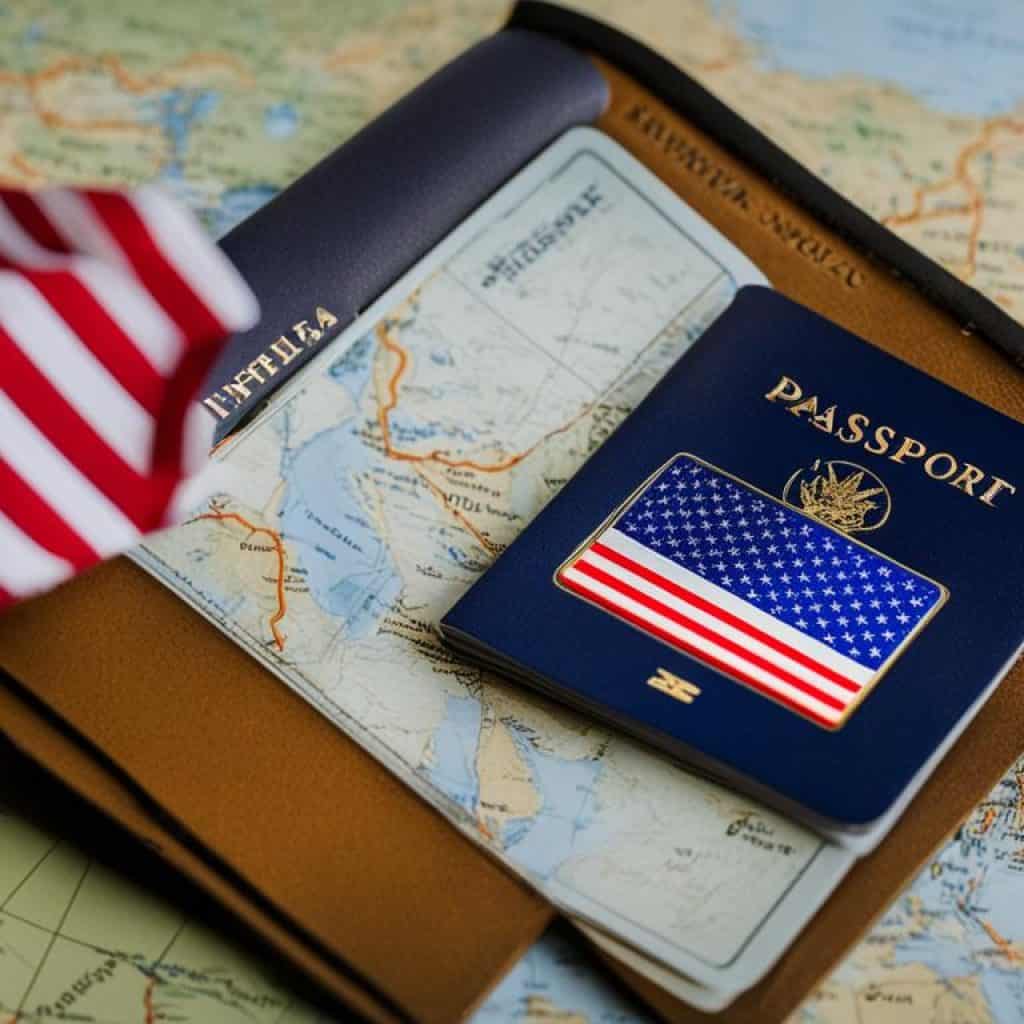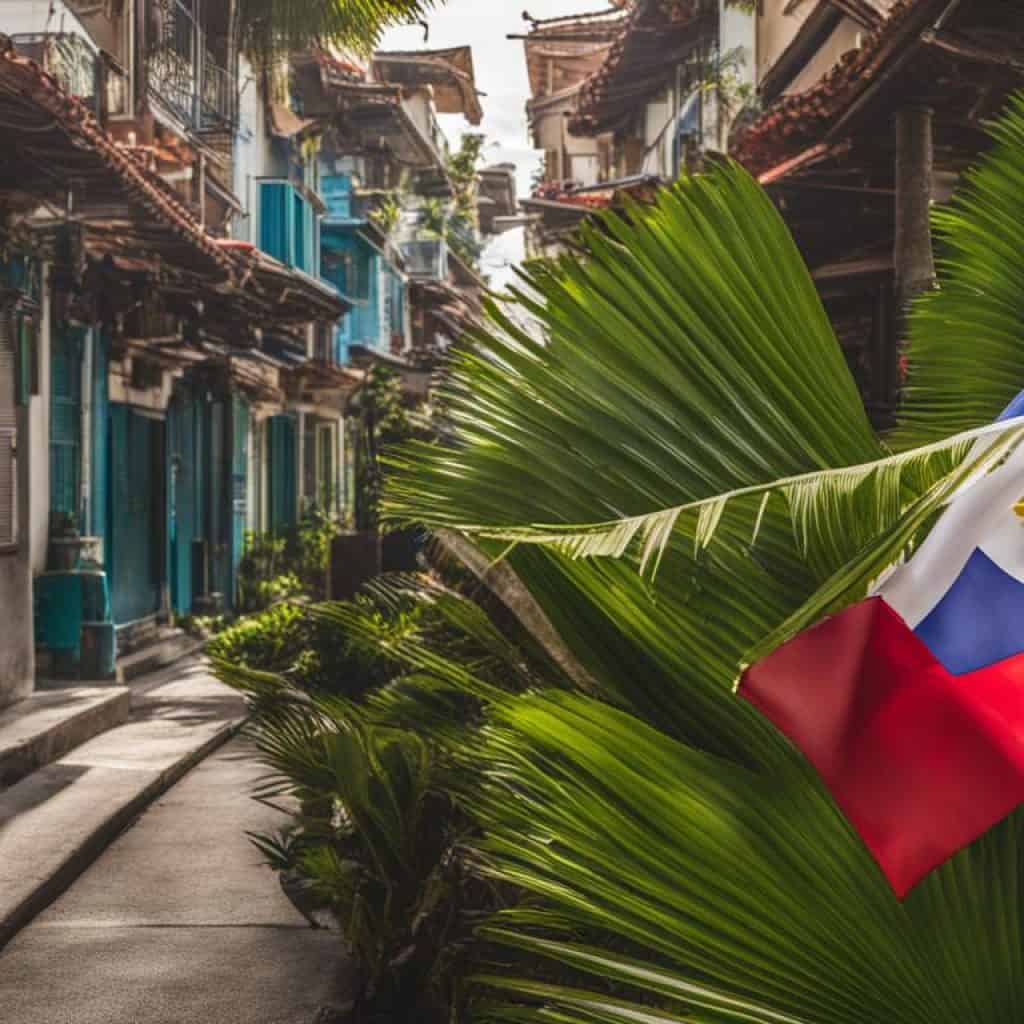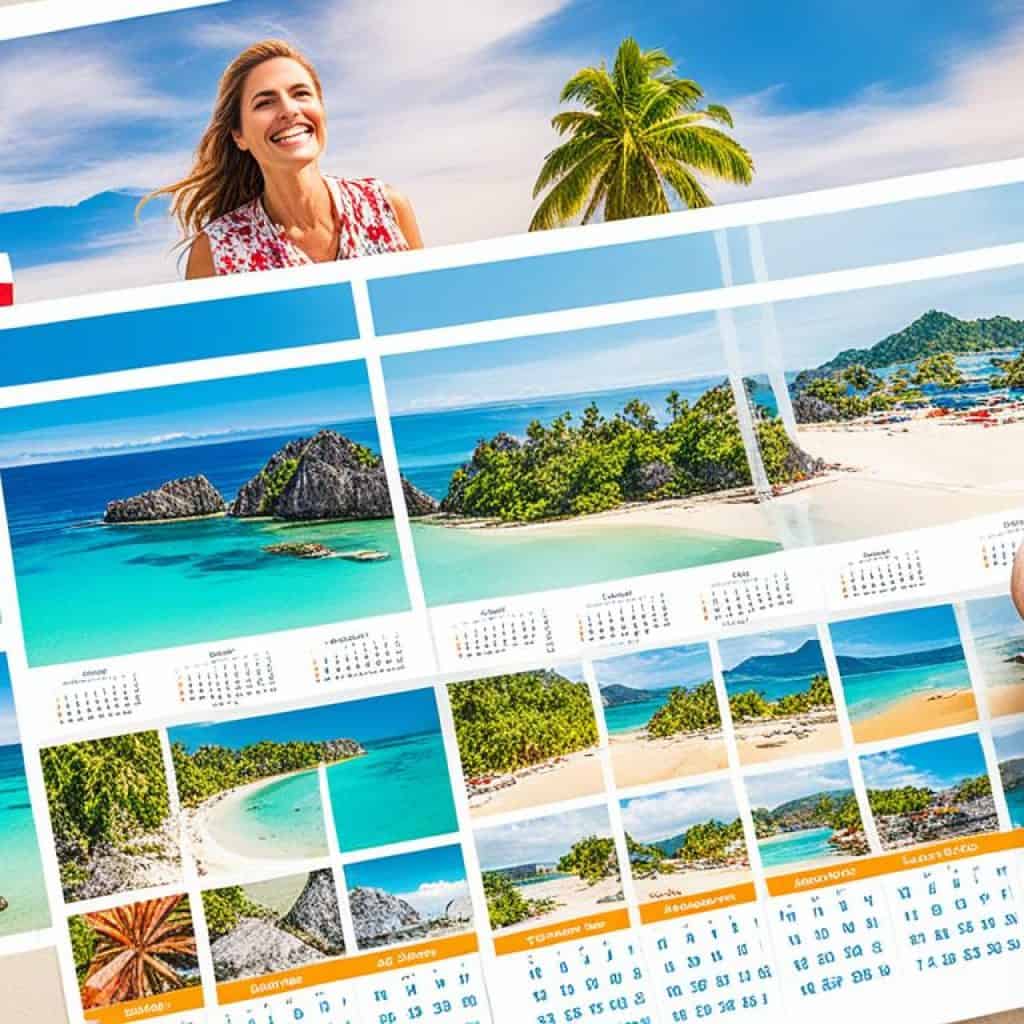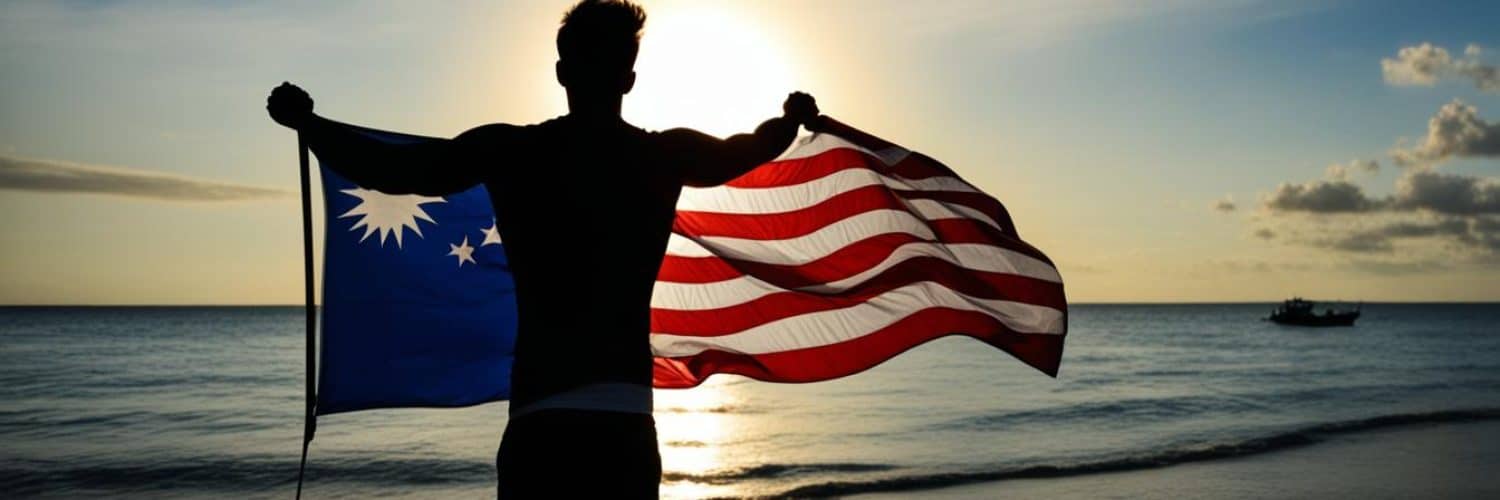Are you a US citizen dreaming of a long-term stay in the beautiful Philippines? Curious about the duration of your stay and the visa options available to you? Look no further! In this article, we will explore how long you can stay in the Philippines as a US citizen and the different visa options that allow you to do so.
Key Takeaways:
- US citizens can legally move to the Philippines for a long-term stay with the right visa.
- Visa-free entry into the Philippines for US citizens is limited to 30 days.
- There are various visa options available for longer stays, including work, study, retirement, and spouse visas.
- Each visa type has specific requirements and fees that US citizens need to fulfill.
- The cost of living in the Philippines is significantly lower compared to the US.
Visa Options for US Citizens
1. Visa-Free Stay
For short stays of up to 30 days, US citizens can enter the Philippines visa-free. This allows you to enjoy a short vacation or attend business meetings without the need for a visa. However, it’s important to note that this visa-free stay cannot be extended beyond 30 days. If you plan to stay longer, you’ll need to apply for a different visa type.
2. Work Visas
If you’re planning to work in the Philippines, you’ll need to obtain a work visa. There are different work visa categories depending on your employment situation, such as the Temporary Visitor’s Visa with Work Permit (9G Visa) for regular employment or the Special Work Permit (SWP) for short-term work engagements. Each work visa category has specific requirements and fees that you need to fulfill.
3. Student Visas
If you’re a US citizen planning to study in the Philippines, you’ll need to apply for a student visa. This visa is required for enrollment in Philippine educational institutions. To obtain a student visa, you’ll need to provide acceptance letters from the educational institution, proof of financial capability, and other supporting documents. It’s important to note that the student visa application process may vary depending on the institution and program.
4. Retirement Visas
For US citizens looking to retire in the Philippines, there is a retirement visa option called the Special Resident Retiree’s Visa (SRRV). This visa provides long-term residency and various benefits for retirees, such as multiple-entry privileges, exemption from travel taxes, and the option to work or invest in businesses. The SRRV has specific eligibility requirements and financial qualifications that you’ll need to meet.
5. Spouse Visas
If you’re married to a Philippine citizen or a foreign national with permanent residency in the Philippines, you can apply for a spouse visa. The spouse visa allows you to stay in the Philippines and provides a path to permanent residency. The application process may require a marriage certificate, proof of financial capability, and other supporting documentation.
It’s important to note that each visa type has its own requirements, fees, and application process. It’s recommended to consult with the Philippine Embassy or Consulate in your area for the most up-to-date and accurate information regarding visa requirements and application procedures.
Work Visa for US Citizens
If you’re a US citizen planning to work in the Philippines, you’ll need to apply for a work visa. This visa allows you to legally work and stay in the country for a specified period of time. To obtain a work visa, you’ll need to provide documentation that proves your identity and employment details, both from yourself and your prospective employer.
Applying for a work visa involves several steps, including filling out the application form, submitting the required documents, and paying the visa application fee. The visa application fee for a work visa is $400. However, it’s important to note that there may be additional fees for work permit applications, depending on your specific circumstances.
By obtaining a work visa, you’ll be able to enjoy the benefits of working in the Philippines, such as gaining valuable international work experience, exploring new career opportunities, and immersing yourself in the rich culture and vibrant lifestyle of the country.
“A work visa opens up a world of opportunities for US citizens who are looking to expand their professional horizons and experience the unique charm of the Philippines.”
Work Visa Application Process
The process of applying for a work visa as a US citizen typically involves the following steps:
- Research and identify the appropriate work visa category based on your specific employment situation.
- Gather the necessary documents, which may include your passport, employment contract, educational qualifications, and proof of financial stability.
- Fill out the work visa application form accurately and completely.
- Submit the application along with the required documents to the Philippine embassy or consulate in your area.
- Pay the visa application fee.
- Attend any required interviews or provide additional documentation, if requested.
- Wait for the visa approval.
- Upon visa approval, make the necessary arrangements to travel to the Philippines.
It’s important to note that the processing time for work visas can vary, so it’s advisable to apply well in advance of your planned employment start date. Additionally, it’s crucial to ensure that you comply with all the immigration rules and regulations set forth by the Philippine government to avoid any travel restrictions or penalties.
With a valid work visa in hand, you’ll have the opportunity to embrace the vibrant work culture of the Philippines and carve out a fulfilling career path in this beautiful Southeast Asian nation.
| Work Visa Details | Fee | Processing Time |
|---|---|---|
| Work Visa | $400 | Varies (typically 1-3 months) |
| Work Permit | Additional fees may apply | Varies (typically 2-4 weeks) |
Having a work visa allows US citizens to pursue their professional goals and contribute to the vibrant workforce of the Philippines. With proper documentation and adherence to the immigration rules, you can navigate the process smoothly and embark on a rewarding work experience in this tropical paradise.
Student Visa for US Citizens
For US citizens who are planning to study in the Philippines, obtaining a student visa is crucial. This visa allows you to enroll in a recognized Philippine educational institution and pursue your academic goals. To apply for a student visa, you will need to submit various documents, including:
- Acceptance letter from a recognized Philippine educational institution
- Proof of financial capability to support your studies
- Medical certificates
- Valid passport
Additionally, you may be required to undergo a personal interview at the Philippine Embassy or Consulate in your area. The application fee for a student visa is $250.
Studying in the Philippines not only provides you with quality education but also exposes you to a vibrant culture and diverse learning environment. With numerous educational institutions to choose from, you can find a program that suits your academic interests and career aspirations.
Embark on an enriching educational journey in the Philippines and explore the beauty of this Southeast Asian nation while pursuing your academic dreams.
| Student Visa Requirements for US Citizens | Application Fee |
|---|---|
| Acceptance letter from a recognized Philippine educational institution | $250 |
| Proof of financial capability to support your studies | $250 |
| Medical certificates | $250 |
| Valid passport | $250 |

Retirement Visa for US Citizens
Are you dreaming of retiring in the beautiful Philippines? As a US citizen over the age of 35, you have the opportunity to apply for the Retirement Visa, also known as the Special Resident Retiree’s Visa (SRRV). This visa allows you to enjoy an extended stay in the Philippines and make it your home away from home.
The Retirement Visa offers a range of benefits and privileges to foreign nationals who choose to retire in the Philippines. To qualify for this visa, there are specific eligibility requirements that you need to meet. The requirements may vary depending on your circumstances, but they often include maintaining a deposit in a Philippine bank or making a real estate investment in the country.
Once you meet the eligibility criteria and your application is approved, you can enjoy a long-term stay in the Philippines without the need for frequent visa renewals. The Retirement Visa allows you to live a comfortable and fulfilling life in this tropical paradise.
| Visa Name | Special Resident Retiree’s Visa (SRRV) |
|---|---|
| Eligibility | US citizens above the age of 35 |
| Requirements |
|
| Application Fee | $1,400 |
| Annual Fee | $360 |
With the Retirement Visa, you can fully embrace the vibrant culture, warm hospitality, and breathtaking landscapes that the Philippines has to offer. Whether it’s relaxing on pristine beaches, exploring picturesque islands, or immersing yourself in the rich history and traditions, the Philippines provides endless opportunities for a fulfilling retirement.
Living in the Philippines: The Basics
Moving to the Philippines as a US citizen offers a unique opportunity to experience a different way of life. With its lower cost of living compared to the US, the Philippines has become an attractive destination for retirement or extended stays. However, it’s important to be aware of certain aspects of living in the Philippines to ensure a smooth transition.
One of the key considerations is healthcare. While the public healthcare system in the Philippines is not highly ranked, there are private healthcare facilities that offer quality services. It is recommended for US citizens to have private health insurance to ensure access to the best healthcare options available. Prioritizing health insurance will provide peace of mind and the necessary financial coverage in case of medical emergencies.
To facilitate everyday financial transactions, US citizens can open a bank account in the Philippines. Major cities in the Philippines, such as Manila and Cebu, have banking services that cater to expatriates. By having a local bank account, you can easily manage your finances, access ATM services, and make transactions within the country.
It’s essential to thoroughly research and choose a reliable bank that meets your specific needs and offers convenient services in your chosen location. Setting up a local bank account will enable you to efficiently handle financial matters and enjoy the convenience of local banking services.
Living in the Philippines also means immersing yourself in the vibrant local culture, exploring breathtaking landscapes, and indulging in delicious cuisine. The country offers a diverse range of experiences, from bustling city life to picturesque beaches and scenic mountains. Embrace the warmth and hospitality of the Filipino people as you navigate your new surroundings.
Cost Comparison - United States vs. Philippines
The cost of living in the Philippines is significantly lower compared to the United States, allowing you to stretch your budget and enjoy a comfortable lifestyle. Everyday expenses, such as meals and transportation, are considerably more affordable, and renting a property is significantly cheaper as well.
Image:
Cost of Living in the Philippines
When considering an extended stay in the Philippines as a US citizen, one of the key advantages is the significantly lower cost of living compared to the US. Whether it’s everyday expenses like meals, groceries, and transportation or the cost of renting a property, you’ll find that living expenses are more affordable in the Philippines. In fact, on average, the cost of living in the Philippines is approximately 52% cheaper than in the US. However, it’s important to note that prices may vary depending on the location.
If you’re looking to stretch your budget and make the most out of your stay in the Philippines, you’ll be pleasantly surprised by the savings you can achieve. With more affordable everyday expenses and cheaper rental options, you can enjoy a comfortable lifestyle without breaking the bank. This can be particularly beneficial for those planning an extended retirement in the Philippines or seeking a change in lifestyle.
To give you a better idea of the cost differences, here’s a breakdown of some common expenses in the Philippines compared to the US:
As seen in the table above, the cost of meals, rent, and transportation in the Philippines can be significantly lower compared to the US. These savings can make a big difference in your overall expenses during your extended stay.
Whether you’re planning to work, study, retire or join family in the Philippines, the lower cost of living can provide you with a unique opportunity to enjoy a fulfilling lifestyle while making the most of your budget. Take advantage of the affordable prices and explore the vibrant culture, beautiful landscapes, and warm hospitality that the Philippines has to offer.

In the next section, we’ll provide essential information on the cost of moving to the Philippines, including shipping belongings and planning for travel expenses.
Cost of Moving to the Philippines
Moving to the Philippines is an exciting adventure that comes with costs to consider. When planning your relocation, it’s important to budget for expenses such as shipping your belongings and arranging flights for your family. These costs can vary depending on various factors, so it’s advisable to obtain quotes from shipping companies and plan ahead to ensure a smooth transition.
Shipping Costs
Shipping your personal belongings from the US to the Philippines can be a significant expense. The cost will depend on the volume of items you wish to transport and the shipping method you choose. Typically, shipping costs for a full container range from $850 to $4,500.
It’s essential to research and compare shipping companies to find the best rates and services available. Here are some factors to consider when evaluating shipping costs:
- Container size: The size of the container you choose will impact the overall cost. Options range from full containers to shared containers.
- Shipping method: You can opt for air freight or sea freight. Air freight is faster but more expensive, whereas sea freight is more cost-effective but takes longer.
- Additional services: Some shipping companies offer additional services like packing, storage, and insurance. These services may come at an extra cost but can provide convenience and peace of mind.
By obtaining quotes from different shipping companies, you can compare prices and services to make an informed decision that fits your budget and needs.
Flight Expenses
When searching for flights, it’s beneficial to use online travel agencies and comparison websites to find competitive prices. Consider booking well in advance to secure the best deals and flexibility in your travel plans.
Embarking on a new chapter in the Philippines requires careful financial planning. With proper budgeting and research, you can make informed decisions regarding shipping costs and flight expenses. Being prepared will help ensure a successful and stress-free move for you and your family.
Housing in the Philippines
When planning an extended stay in the Philippines as a US citizen, finding suitable housing is a top priority. Whether you’re considering renting or buying a property, there are options to suit your needs and preferences.
Renting a Property:
Renting a property is a popular choice, especially for those who are new to the country and want to explore different neighborhoods before making a long-term commitment. The cost of renting in the Philippines is significantly cheaper compared to the US, allowing you to find a comfortable and affordable place to call home.
Buying a Property:
The availability of housing options may vary depending on the location in the Philippines. Major cities like Manila and Cebu offer a wide range of housing choices, including condominiums, townhouses, and single-family homes. In more rural areas, traditional Filipino houses or beachfront properties are popular options.
Before finalizing any housing arrangements, it’s important to conduct thorough research, visit the properties in person if possible, and consult with a trusted local real estate agent. They can provide valuable insights and guide you through the process to ensure you make an informed decision that meets your needs and budget.
Healthcare in the Philippines
The public healthcare system in the Philippines may not meet the expectations of US citizens, so it is highly recommended for individuals planning an extended stay in the Philippines to obtain private health insurance. Private healthcare facilities in the country offer superior services and facilities, ensuring access to quality healthcare.
Having health insurance is crucial for expats as it provides them with peace of mind and protection in case of medical emergencies. With private health insurance, US citizens can avail themselves of medical treatments from reputable hospitals and clinics in the Philippines, ensuring that their healthcare needs are met.
“The public healthcare system in the Philippines is not highly ranked, so it is advisable for US citizens to have private health insurance.”
Private healthcare facilities in the Philippines offer a wide range of medical services, including consultations with specialists, diagnostic tests, surgeries, and emergency care. These facilities are equipped with state-of-the-art medical equipment and staffed by highly trained healthcare professionals.
Private health insurance plans for expats in the Philippines typically cover a range of services, including hospitalization, outpatient care, medication, and emergency medical evacuation. By investing in comprehensive health insurance coverage, US citizens can ensure that they have access to the best medical care available in the country.
The cost of private health insurance in the Philippines varies depending on factors such as age, health condition, coverage level, and insurer. It is recommended for US citizens to research and compare different insurance providers to find the most suitable and affordable plan for their specific needs.

Banking and Taxes in the Philippines
When staying in the Philippines as a US citizen, it is important to have access to banking services and understand the taxation laws. Opening a bank account in the Philippines is a convenient way to manage your finances during your stay. Major cities like Manila and Cebu offer a wide range of banking and financial services to cater to the needs of expatriates.
Having a local bank account eliminates the hassle of dealing with exchange rates and allows you to easily receive and make payments in the local currency. You can also set up automatic bill payments and access online banking services for greater convenience.
ATMs are readily available in cities, making it convenient to withdraw cash when needed. However, it is important to note that some ATMs may charge fees, especially for international transactions. It is advisable to check with your bank about international transaction fees and look for ATMs that do not incur additional charges.
Taxation Laws in the Philippines
As a US citizen staying in the Philippines, you may have tax obligations in both countries. The United States follows a global income tax system, which means that US citizens are required to report and pay taxes on their worldwide income, regardless of where they are living.
The Philippines, on the other hand, follows a territorial tax system, which means that only income earned within the country is subject to Philippine taxes. However, there are tax treaties between the US and the Philippines that provide relief to prevent double taxation.
To ensure compliance with both US and Philippine tax laws, it is recommended to consult with a tax professional who specializes in international taxation. They can help you understand your tax obligations, guide you through the process of filing tax returns, and assist in maximizing any tax benefits or credits that may be available to you.
“Having a local bank account in the Philippines offers convenience and flexibility for managing your finances during your stay. Make sure to be aware of any fees associated with ATM transactions, and consult a tax professional to ensure compliance with tax laws in both the US and the Philippines.”
| Banking and Taxes in the Philippines | Key Points |
|---|---|
| Opening a Bank Account | – Access to banking services – Convenience of local currency transactions – Online banking and automatic bill payments |
| ATM Usage | – Availability of ATMs in major cities – Be mindful of potential fees for international transactions |
| Taxation Laws | – Understanding tax obligations in both the US and the Philippines – Seeking professional advice for compliance and maximizing benefits |
Education in the Philippines
The education system in the Philippines offers a familiar environment for US students, as it is based on the American model. This similarity makes it easier for US citizens to adjust and navigate the education system while staying in the Philippines.
One of the advantages for US students in the Philippines is the widespread use of the English language. English is one of the official languages in the Philippines, making it easier for international students to communicate and participate in classes. The use of English also extends to textbooks and instructional materials, minimizing language barriers in the learning process.
The Philippines has a mix of public and private schools, providing options for students with different preferences and needs. Public schools are funded and regulated by the government, offering education at no or minimal cost. Private schools, on the other hand, are privately owned and often require tuition fees. Private schools generally have smaller class sizes and may offer enhanced facilities and resources.
For expatriate families and those seeking an international education, there are international schools available in major cities in the Philippines. These schools offer a curriculum based on international standards, such as the International Baccalaureate (IB) or the American curriculum. International schools often have diverse student populations and a multicultural learning environment.
The school year in the Philippines typically runs from June to March, with a break during December and January. This differs from the traditional school year in the United States, which typically starts in August or September. US students planning an extended stay in the Philippines will need to adjust to this different academic calendar.
Benefits of Education in the Philippines:
- Similarities with the American education system facilitate an easier transition for US students
- English language proficiency aids in communication and learning
- Options for public, private, and international schools provide a variety of educational experiences
- International schools offer an internationally recognized curriculum
- A unique cultural experience and exposure to diverse student populations
Challenges of Education in the Philippines:
- Adjusting to a different academic calendar than in the United States
- Varied quality of public and private schools
- Adapting to a new learning environment and teaching methods
- Understanding the differences in educational standards and grading systems
- Navigating language barriers in non-English subjects
Table: A Comparison of Education Systems in the Philippines and the United States
| Aspect | Philippines | United States |
|---|---|---|
| Academic Calendar | June to March | August or September to May or June |
| Primary Language | English and Filipino | English |
| Public Education | Available with nominal or no fees | Mandatory and publicly funded by the government |
| Private Education | Tuition-based and privately owned | Tuition-based and privately owned |
| International Schools | Available in major cities | Available in major cities |
Conclusion
Moving to the Philippines as a US citizen offers various opportunities for work, study, retirement, or joining family. Understanding the visa requirements and costs associated with living in the Philippines is essential. The lower cost of living, affordable housing options, and the unique cultural experience make the Philippines an attractive destination for US citizens seeking an extended stay or a change in lifestyle.
Whether you’re looking to explore new career options, pursue higher education, relax and enjoy retirement, or reunite with loved ones, the Philippines has something to offer. From the bustling city life of Manila to the serene beaches of Palawan, this archipelago nation provides a diverse and inviting environment for US citizens.
With visa options available for different purposes, such as work, study, or retirement, US citizens have the flexibility to choose the right path for their journey to the Philippines. However, it is crucial to understand and fulfill the specific visa requirements for each category, ensuring a smooth transition and legal stay in the country.
Additionally, the cost of living in the Philippines is significantly lower compared to the US, allowing US citizens to enjoy a more affordable lifestyle. The availability of affordable housing options further enhances the appeal of this tropical paradise. By immersing yourself in the rich Philippine culture, you’ll have the opportunity to create cherished memories and expand your horizons.
FAQ
How long can a US citizen stay in the Philippines?
What visa options are available for US citizens staying in the Philippines?
There are various visa options available for US citizens staying in the Philippines, including work visas, student visas, retirement visas, and spouse visas. Each visa type has specific requirements and fees.
How can a US citizen obtain a work visa in the Philippines?
US citizens planning to work in the Philippines can apply for a work visa. This visa requires documentation to prove identity and employment details, both from the applicant and the employer. The visa application fee for a work visa is $400.
Can a US citizen apply for a student visa in the Philippines?
US citizens who plan to study in the Philippines can apply for a student visa. This visa requires acceptance into a recognized Philippine educational institution and the submission of various documents. The application fee for a student visa is $250.
Is there a retirement visa option for US citizens in the Philippines?
Yes, US citizens over the age of 35 can apply for a retirement visa in the Philippines. This visa, called the Special Resident Retiree’s Visa (SRRV), allows foreign nationals to retire in the Philippines. There are specific eligibility requirements and fees associated with this visa.
What are some basics to know about living in the Philippines as a US citizen?
Living in the Philippines as a US citizen involves adjusting to a new way of life. The country has a lower cost of living compared to the US, but the public healthcare system is not highly ranked. Opening a bank account and accessing banking services in major cities is possible.
How does the cost of living in the Philippines compare to the US?
The cost of living in the Philippines is significantly lower compared to the US. Everyday expenses such as meals, groceries, transportation, and rent are more affordable. On average, the cost of living in the Philippines is around 52% cheaper than in the US.
What are the costs associated with moving to the Philippines as a US citizen?
Moving to the Philippines involves costs such as shipping belongings and flights for the family. Shipping costs can range from $850 to $4,500 for a full container from the US to the Philippines. It is advisable to obtain quotes from shipping companies and plan ahead for these expenses.
How can a US citizen find housing in the Philippines?
Finding housing in the Philippines is essential for US citizens moving there. Renting a property is a popular option, especially for newcomers who want to explore the area before purchasing. The cost of renting is significantly cheaper compared to the US, and buying a property is also more affordable.
What healthcare options are available for US citizens in the Philippines?
The public healthcare system in the Philippines is not highly ranked, so US citizens are advised to have private health insurance. Private healthcare facilities offer higher-quality services and facilities. Expats should prioritize having health insurance to ensure access to quality healthcare.
Can US citizens open a bank account in the Philippines?
Yes, US citizens can open a bank account in the Philippines. Major cities like Manila and Cebu have banking and financial services. It is recommended to have a local bank account for convenience. ATMs are accessible in cities, but fees may apply, especially for international transactions.
What is the education system like in the Philippines for US citizens?
The education system in the Philippines is based on the American model, which may make it easier for US students to adjust. English is widely spoken, and there are a mix of public and private schools. International schools are also available in major cities. The school year generally runs from June to March.


















Add comment